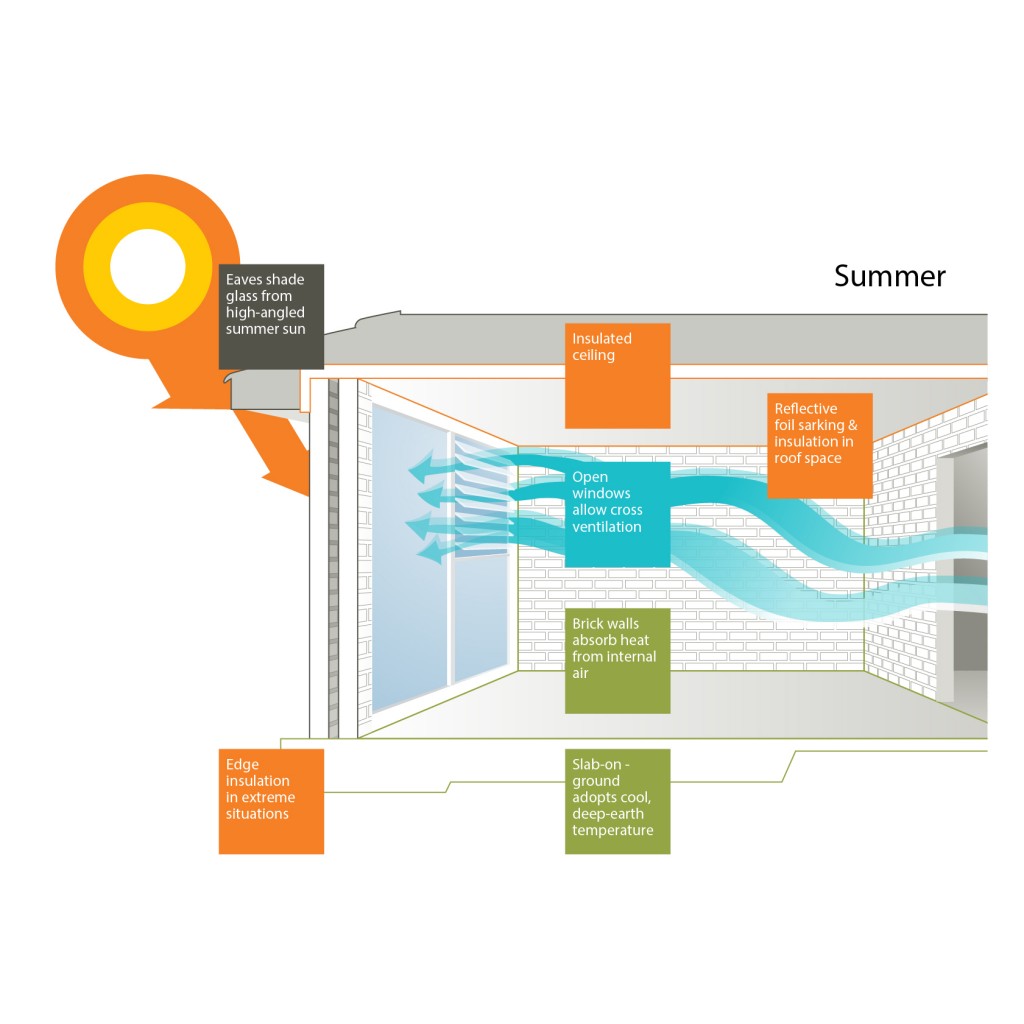The Case Studies
How do you design an energy efficient home for your climate?
Back to allDesigning to suit your environment can make all the difference. Your home should be designed following some basic design principles known as “Passive Solar Design” in order to take full advantage of energy efficiencies. Passive Solar Design takes your local environmental conditions into account with these four key design principles:
1. Orientation
Position your home relative to the sun to take advantage of its natural energy. Ensure your windows are North-facing to allow in the winter sun while overhanging eaves will shade your home from the heat of summer.
2. Ventilation
Good ventilation is essential to an even temperature. Well positioned doors and windows on both sides of your home will allow crossventilation to keep your home cool in summer. Ensure they are properly sealed for winter.
3. Insulation
Wall and ceiling insulation is key to keeping even temperatures inside the house. Full brick helps protect your home from any weather extremes and provides superior sound insulation from the outside and in between rooms.
4. Thermal mass
Well positioned internal brick walls will help you achieve the best energy efficiencies with brick, capturing nature’s own energy to reduce your reliance on artificial heating and cooling – keeping you comfortable all year round. Brick’s ability to absorb, store and re-release heat energy makes it one of the best performing materials for energy efficiency
Illustrations:



